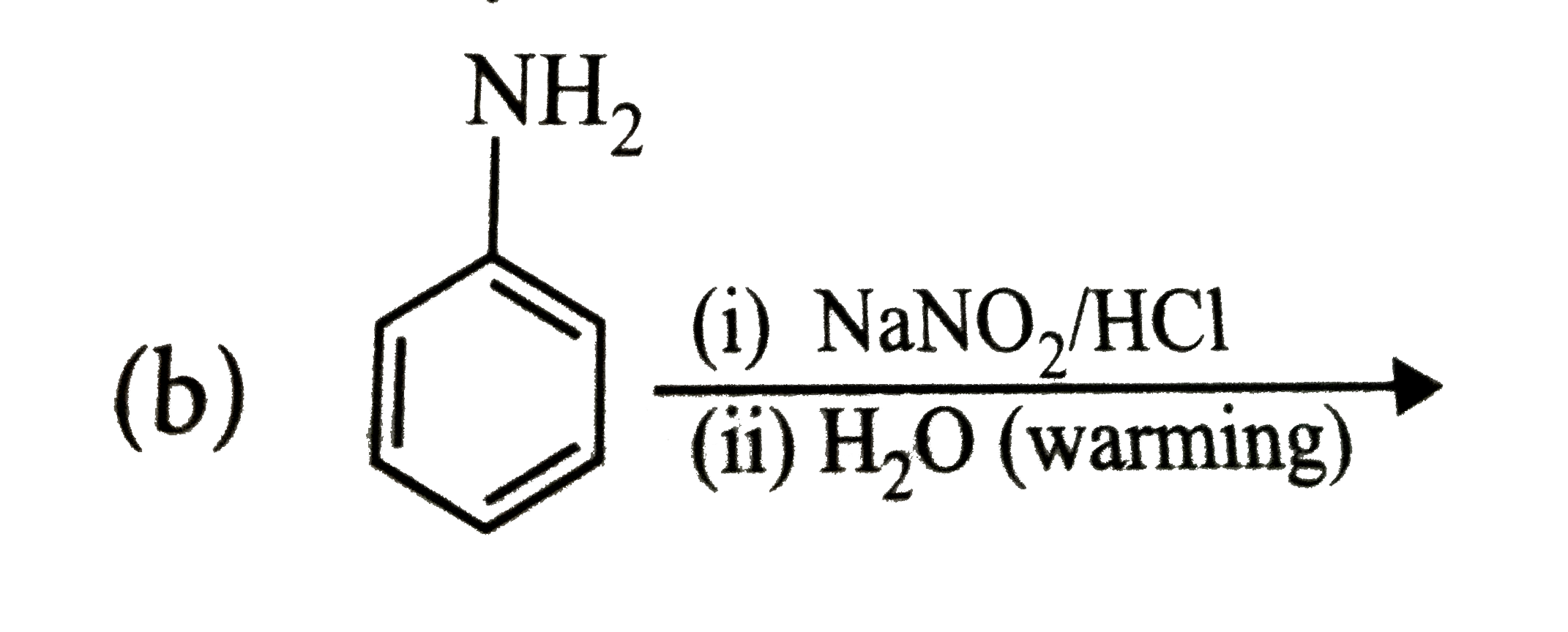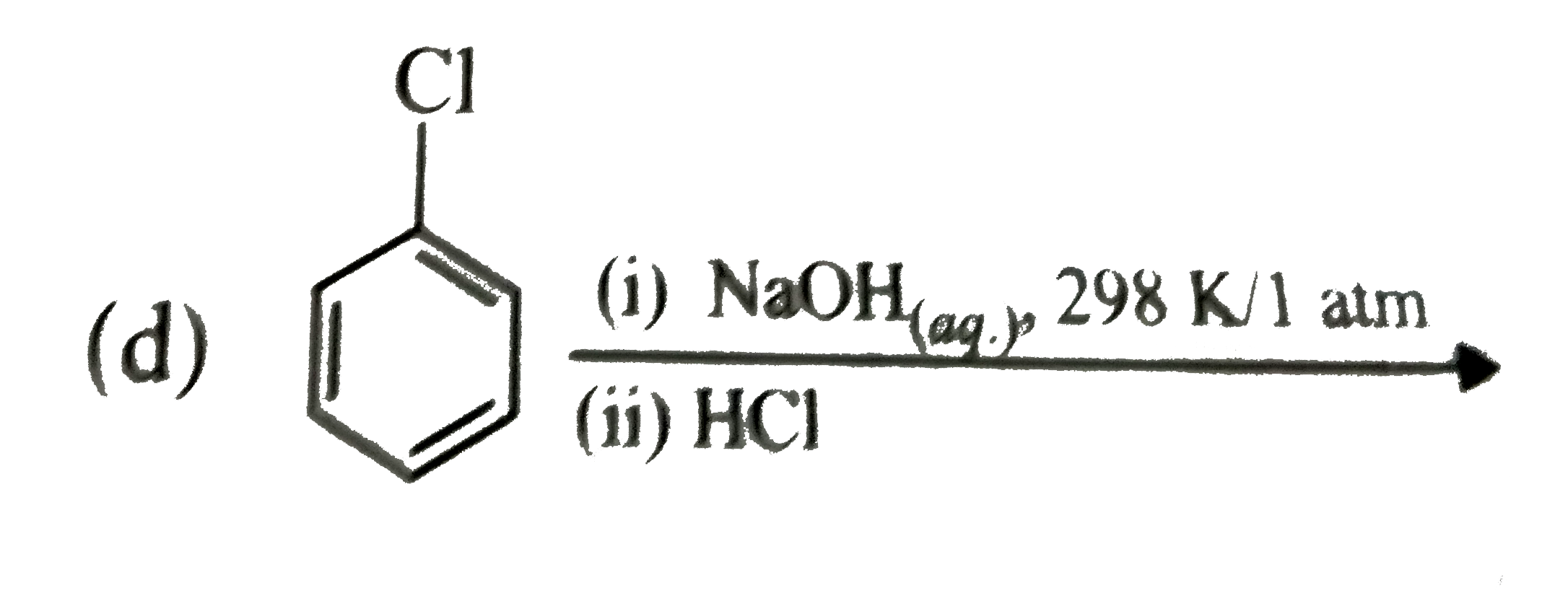Reaction of phenol with chloroform in presence of dilute sodium hydroxide finally introduces which one of the following functional group ?
(a)
(b)
(c)
(d)
The correct Answer is:B
To solve the question regarding the reaction of phenol with chloroform in the presence of dilute sodium hydroxide, we will follow these steps:
Step 1: Understand the Reactants
We start with phenol (C6H5OH) and chloroform (CHCl3), and we are using dilute sodium hydroxide (NaOH) as a base.
Step 2: Identify the Reaction Type
This reaction is known as the Riemer-Tiemann reaction, which involves the introduction of an aldehyde group (CHO) at the ortho position of the phenol ring.
Step 3: Formation of the Intermediate
When phenol reacts with chloroform in the presence of dilute NaOH, an intermediate is formed. The hydroxyl (OH) group of phenol is deprotonated by NaOH, resulting in the formation of a phenoxide ion (C6H5O^-Na^+).
At the ortho position of the phenoxide ion, chloroform reacts to introduce a dichloromethyl group (CHCl2), leading to the formation of an intermediate compound.
Step 4: Further Reaction of the Intermediate
The intermediate undergoes hydrolysis. The Na^+ ion is replaced by a hydrogen ion (H^+) from the surrounding medium, leading to the formation of a hydroxyl group (OH) at the ortho position and the conversion of the CHCl2 group into an aldehyde group (CHO).
Step 5: Final Product
The final product of this reaction is salicylaldehyde (C6H4(OH)(CHO)), which contains the aldehyde functional group (CHO) at the ortho position relative to the hydroxyl group.
Conclusion
Thus, the functional group introduced in the reaction of phenol with chloroform in the presence of dilute sodium hydroxide is the aldehyde group (CHO).
Answer
The correct answer is: B) CHO.
---
We start with phenol (C6H5OH) and chloroform (CHCl3), and we are using dilute sodium hydroxide (NaOH) as a base.
This reaction is known as the Riemer-Tiemann reaction, which involves the introduction of an aldehyde group (CHO) at the ortho position of the phenol ring.
When phenol reacts with chloroform in the presence of dilute NaOH, an intermediate is formed. The hydroxyl (OH) group of phenol is deprotonated by NaOH, resulting in the formation of a phenoxide ion (C6H5O^-Na^+).
The intermediate undergoes hydrolysis. The Na^+ ion is replaced by a hydrogen ion (H^+) from the surrounding medium, leading to the formation of a hydroxyl group (OH) at the ortho position and the conversion of the CHCl2 group into an aldehyde group (CHO).
The final product of this reaction is salicylaldehyde (C6H4(OH)(CHO)), which contains the aldehyde functional group (CHO) at the ortho position relative to the hydroxyl group.
Thus, the functional group introduced in the reaction of phenol with chloroform in the presence of dilute sodium hydroxide is the aldehyde group (CHO).
The correct answer is: B) CHO.
Similar Questions
Knowledge Check
- Question 1 - Select One
The reaction between phenol and chloroform in the presence of aqueous NaOH is
Anucleophilic substitution reactionBelectrophilic addition reactionCelectrophilic substitution reactionDnucleophilic addition reaction. - Question 2 - Select One
Which of the following reactions will not yield phenol ?
A B
B C
C D
D
- Question 3 - Select One
Which of the following compounds will react with sodium hydroxide solution in water ?
AC6H5OHBC6H5CH2OHC(CH3)3COHDC2H5OH
Benzaldehyde on reaction with acetophenone in the presence of sodium hydroxide gives
View SolutionIn which of the following reactions phenol is not obtained:
View SolutionWhich of the following compounds will react with sodium hydroxide solution in water ?
View SolutionThe functional group which is formed when Phenol is made to react with Chloroform in the presence of dilute sodium hydroxide
View SolutionWhich of the following oxides is not expected to react with sodium hydroxide ?
View Solution

